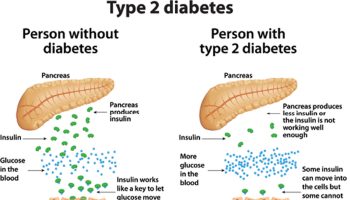What is cantaloupe
Cantaloupe (Cucumis melo species in the Cucurbitaceae family) also known as muskmelon (India and the United States), mushmelon, rockmelon, sweet melon, or spanspek (South Africa) 1. Cantaloupes range in weight from 0.5 to 5 kilograms (1 to 11 lb). Originally, cantaloupe referred only to the non-netted, orange-fleshed melons of Europe. However, in more recent usage it has come to mean any orange-fleshed melon of Cucumis melo, and has become the most popular melon in North America.
Cantaloupe is normally eaten as a fresh fruit, as a salad, or as a dessert with ice cream or custard. Melon pieces wrapped in prosciutto are a familiar antipasto.
Because the surface of a cantaloupe can contain harmful bacteria—in particular, Salmonella 2, it is recommended to wash and scrub a melon thoroughly before cutting and consumption. The fruit should be refrigerated after cutting it and consumed in less than three days to prevent risk of Salmonella or other bacterial pathogens.
Phytochemical analysis of cantaloupe showed the presence of flavonoids, phenols and saponins 3. These phytochemical constituents present in the hydro-methanol extract of cantaloupe seeds and the exact mechanism need to be evaluated.
Figure 1. Cantaloupe
Cantaloupe nutrition facts
Raw cantaloupe is 90% water, 8% carbohydrates, 0.8% protein and 0.3% fat, providing 140 kJ (34 kcal) and 2020 μg of the provitamin A orange carotenoid, beta-carotene per 100 grams. Fresh cantaloupe is a rich source (20% or more of the Daily Value or DV) of vitamin C (44% DV) and vitamin A (21% DV), with other nutrients in negligible amounts (less than 10% DV).
Table 1. Cantaloupe (raw) nutrition facts
| Nutrient | Unit | Value per 100 g | |||||||||||||||||||
| Approximates | |||||||||||||||||||||
| Water | g | 90.15 | |||||||||||||||||||
| Energy | kcal | 34 | |||||||||||||||||||
| Energy | kJ | 141 | |||||||||||||||||||
| Protein | g | 0.84 | |||||||||||||||||||
| Total lipid (fat) | g | 0.19 | |||||||||||||||||||
| Ash | g | 0.65 | |||||||||||||||||||
| Carbohydrate, by difference | g | 8.16 | |||||||||||||||||||
| Fiber, total dietary | g | 0.9 | |||||||||||||||||||
| Sugars, total | g | 7.86 | |||||||||||||||||||
| Sucrose | g | 4.35 | |||||||||||||||||||
| Glucose (dextrose) | g | 1.54 | |||||||||||||||||||
| Fructose | g | 1.87 | |||||||||||||||||||
| Lactose | g | 0 | |||||||||||||||||||
| Maltose | g | 0.04 | |||||||||||||||||||
| Galactose | g | 0.06 | |||||||||||||||||||
| Starch | g | 0.03 | |||||||||||||||||||
| Minerals | |||||||||||||||||||||
| Calcium, Ca | mg | 9 | |||||||||||||||||||
| Iron, Fe | mg | 0.21 | |||||||||||||||||||
| Magnesium, Mg | mg | 12 | |||||||||||||||||||
| Phosphorus, P | mg | 15 | |||||||||||||||||||
| Potassium, K | mg | 267 | |||||||||||||||||||
| Sodium, Na | mg | 16 | |||||||||||||||||||
| Zinc, Zn | mg | 0.18 | |||||||||||||||||||
| Copper, Cu | mg | 0.041 | |||||||||||||||||||
| Manganese, Mn | mg | 0.041 | |||||||||||||||||||
| Selenium, Se | µg | 0.4 | |||||||||||||||||||
| Fluoride, F | µg | 1 | |||||||||||||||||||
| Vitamins | |||||||||||||||||||||
| Vitamin C, total ascorbic acid | mg | 36.7 | |||||||||||||||||||
| Thiamin | mg | 0.041 | |||||||||||||||||||
| Riboflavin | mg | 0.019 | |||||||||||||||||||
| Niacin | mg | 0.734 | |||||||||||||||||||
| Pantothenic acid | mg | 0.105 | |||||||||||||||||||
| Vitamin B-6 | mg | 0.072 | |||||||||||||||||||
| Folate, total | µg | 21 | |||||||||||||||||||
| Folic acid | µg | 0 | |||||||||||||||||||
| Folate, food | µg | 21 | |||||||||||||||||||
| Folate, DFE | µg | 21 | |||||||||||||||||||
| Choline, total | mg | 7.6 | |||||||||||||||||||
| Betaine | mg | 0.1 | |||||||||||||||||||
| Vitamin B-12 | µg | 0 | |||||||||||||||||||
| Vitamin B-12, added | µg | 0 | |||||||||||||||||||
| Vitamin A, RAE | µg | 169 | |||||||||||||||||||
| Retinol | µg | 0 | |||||||||||||||||||
| Carotene, beta | µg | 2020 | |||||||||||||||||||
| Carotene, alpha | µg | 16 | |||||||||||||||||||
| Cryptoxanthin, beta | µg | 1 | |||||||||||||||||||
| Vitamin A, IU | IU | 3382 | |||||||||||||||||||
| Lycopene | µg | 0 | |||||||||||||||||||
| Lutein + zeaxanthin | µg | 26 | |||||||||||||||||||
| Vitamin E (alpha-tocopherol) | mg | 0.05 | |||||||||||||||||||
| Vitamin E, added | mg | 0 | |||||||||||||||||||
| Tocopherol, beta | mg | 0 | |||||||||||||||||||
| Tocopherol, gamma | mg | 0.11 | |||||||||||||||||||
| Tocopherol, delta | mg | 0 | |||||||||||||||||||
| Vitamin D (D2 + D3) | µg | 0 | |||||||||||||||||||
| Vitamin D | IU | 0 | |||||||||||||||||||
| Vitamin K (phylloquinone) | µg | 2.5 | |||||||||||||||||||
| Lipids | |||||||||||||||||||||
| Fatty acids, total saturated | g | 0.051 | |||||||||||||||||||
| 04:00:00 | g | 0 | |||||||||||||||||||
| 06:00:00 | g | 0 | |||||||||||||||||||
| 08:00:00 | g | 0 | |||||||||||||||||||
| 10:00:00 | g | 0 | |||||||||||||||||||
| 12:00:00 | g | 0.001 | |||||||||||||||||||
| 14:00:00 | g | 0.001 | |||||||||||||||||||
| 16:00:00 | g | 0.043 | |||||||||||||||||||
| 18:00:00 | g | 0.005 | |||||||||||||||||||
| Fatty acids, total monounsaturated | g | 0.003 | |||||||||||||||||||
| 16:1 undifferentiated | g | 0 | |||||||||||||||||||
| 18:1 undifferentiated | g | 0.003 | |||||||||||||||||||
| 20:01:00 | g | 0 | |||||||||||||||||||
| 22:1 undifferentiated | g | 0 | |||||||||||||||||||
| Fatty acids, total polyunsaturated | g | 0.081 | |||||||||||||||||||
| 18:2 undifferentiated | g | 0.035 | |||||||||||||||||||
| 18:3 undifferentiated | g | 0.046 | |||||||||||||||||||
| 18:04:00 | g | 0 | |||||||||||||||||||
| 20:4 undifferentiated | g | 0 | |||||||||||||||||||
| 20:5 n-3 (EPA) | g | 0 | |||||||||||||||||||
| 22:5 n-3 (DPA) | g | 0 | |||||||||||||||||||
| 22:6 n-3 (DHA) | g | 0 | |||||||||||||||||||
| Fatty acids, total trans | g | 0 | |||||||||||||||||||
| Cholesterol | mg | 0 | |||||||||||||||||||
| Phytosterols | mg | 10 | |||||||||||||||||||
| Amino Acids | |||||||||||||||||||||
| Tryptophan | g | 0.002 | |||||||||||||||||||
| Threonine | g | 0.017 | |||||||||||||||||||
| Isoleucine | g | 0.021 | |||||||||||||||||||
| Leucine | g | 0.029 | |||||||||||||||||||
| Lysine | g | 0.03 | |||||||||||||||||||
| Methionine | g | 0.012 | |||||||||||||||||||
| Cystine | g | 0.002 | |||||||||||||||||||
| Phenylalanine | g | 0.023 | |||||||||||||||||||
| Tyrosine | g | 0.014 | |||||||||||||||||||
| Valine | g | 0.033 | |||||||||||||||||||
| Arginine | g | 0.029 | |||||||||||||||||||
| Histidine | g | 0.015 | |||||||||||||||||||
| Alanine | g | 0.095 | |||||||||||||||||||
| Aspartic acid | g | 0.136 | |||||||||||||||||||
| Glutamic acid | g | 0.209 | |||||||||||||||||||
| Glycine | g | 0.026 | |||||||||||||||||||
| Proline | g | 0.019 | |||||||||||||||||||
| Serine | g | 0.042 | |||||||||||||||||||
| Other | |||||||||||||||||||||
| Alcohol, ethyl | g | 0 | |||||||||||||||||||
| Caffeine | mg | 0 | |||||||||||||||||||
| Theobromine | mg | 0 | |||||||||||||||||||
| Anthocyanidins | |||||||||||||||||||||
| Cyanidin | mg | 0 | |||||||||||||||||||
| Petunidin | mg | 0 | |||||||||||||||||||
| Delphinidin | mg | 0 | |||||||||||||||||||
| Malvidin | mg | 0 | |||||||||||||||||||
| Pelargonidin | mg | 0 | |||||||||||||||||||
| Peonidin | mg | 0 | |||||||||||||||||||
| Flavan-3-ols | |||||||||||||||||||||
| (+)-Catechin | mg | 0 | |||||||||||||||||||
| (-)-Epigallocatechin | mg | 0 | |||||||||||||||||||
| (-)-Epicatechin | mg | 0 | |||||||||||||||||||
| (-)-Epicatechin 3-gallate | mg | 0 | |||||||||||||||||||
| (-)-Epigallocatechin 3-gallate | mg | 0 | |||||||||||||||||||
| (+)-Gallocatechin | mg | 0 | |||||||||||||||||||
| Flavanones | |||||||||||||||||||||
| Hesperetin | mg | 0 | |||||||||||||||||||
| Naringenin | mg | 0 | |||||||||||||||||||
| Flavones | |||||||||||||||||||||
| Apigenin | mg | 0 | |||||||||||||||||||
| Luteolin | mg | 0.6 | |||||||||||||||||||
| Flavonols | |||||||||||||||||||||
| Kaempferol | mg | 0.1 | |||||||||||||||||||
| Myricetin | mg | 0 | |||||||||||||||||||
| Quercetin | mg | 0 | |||||||||||||||||||
| Isoflavones | |||||||||||||||||||||
| Daidzein | mg | 0 | |||||||||||||||||||
| Genistein | mg | 0 | |||||||||||||||||||
| Glycitein | mg | 0 | |||||||||||||||||||
| Total isoflavones | mg | 0 | |||||||||||||||||||
| Formononetin | mg | 0 | |||||||||||||||||||
| Coumestrol | mg | 0 | |||||||||||||||||||
| Proanthocyanidin | |||||||||||||||||||||
| Proanthocyanidin dimers | mg | 0 | |||||||||||||||||||
| Proanthocyanidin trimers | mg | 0 | |||||||||||||||||||
| Proanthocyanidin 4-6mers | mg | 0 | |||||||||||||||||||
| Proanthocyanidin 7-10mers | mg | 0 | |||||||||||||||||||
| Proanthocyanidin polymers (>10mers) | mg | 0 | |||||||||||||||||||
- Gur A, Tzuri G, Meir A, et al. Genome-Wide Linkage-Disequilibrium Mapping to the Candidate Gene Level in Melon (Cucumis melo). Scientific Reports. 2017;7:9770. doi:10.1038/s41598-017-09987-4. https://www.ncbi.nlm.nih.gov/pmc/articles/PMC5575340/
- A multi-state outbreak of Salmonella Saintpaul in Australia associated with cantaloupe consumption. Epidemiol Infect. 2009 Mar;137(3):367-74. doi: 10.1017/S0950268808000861. Epub 2009 Feb 9. https://www.cambridge.org/core/journals/epidemiology-and-infection/article/multistate-outbreak-of-salmonella-saintpaul-in-australia-associated-with-cantaloupe-consumption/7E3C7974D27F3D711D7E27BF87F444BB
- Antipyretic effects of hydro-methanol extract of Melia azedarach Linn. seeds and Cucumis melo Linn. seeds in experimental rabbits. Pak J Pharm Sci. 2017 Jul;30(4):1257-1261. https://www.ncbi.nlm.nih.gov/pubmed/29039323
- United States Department of Agriculture Agricultural Research Service. National Nutrient Database for Standard Reference Release 28. https://ndb.nal.usda.gov/ndb/search/list






